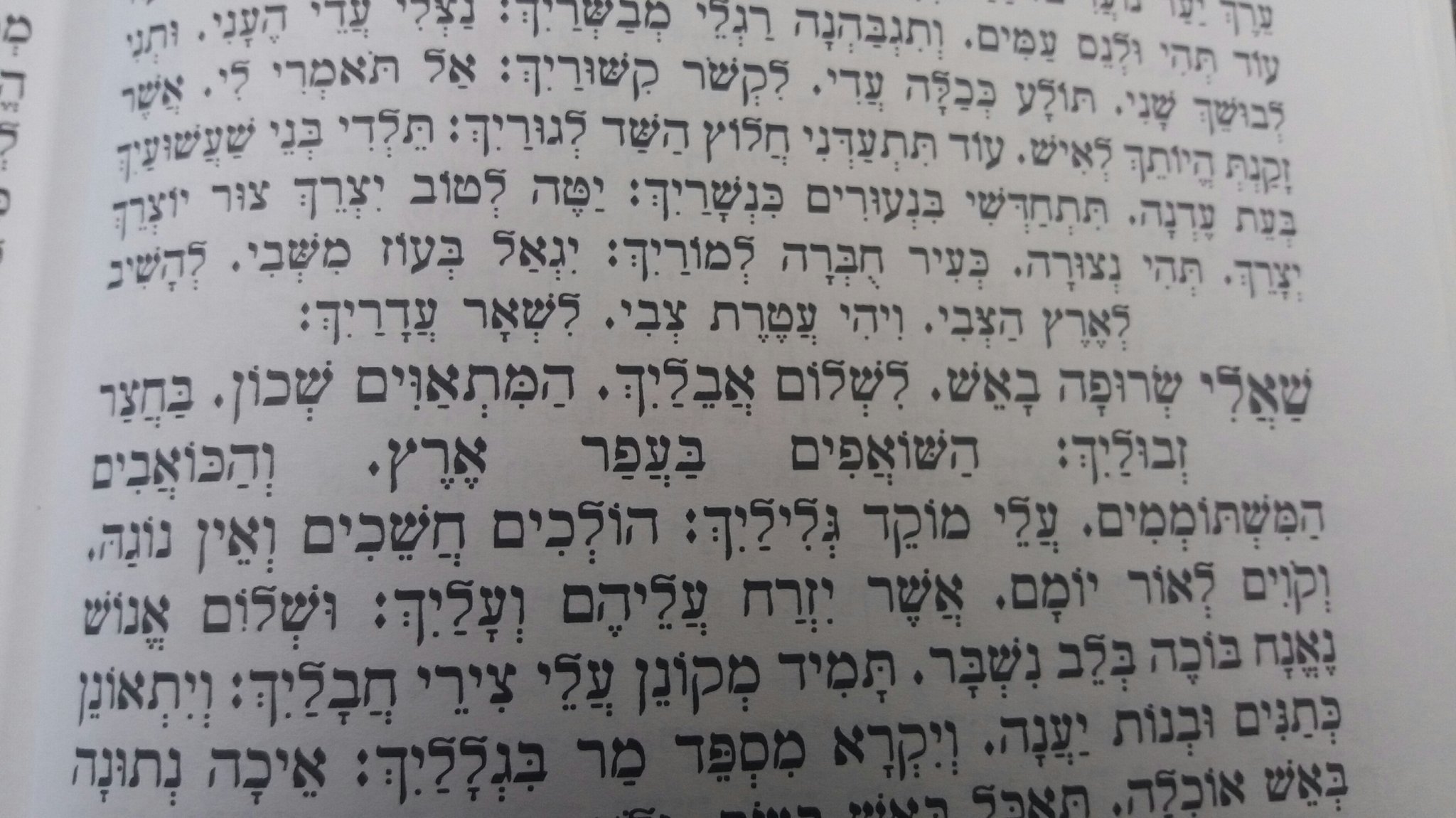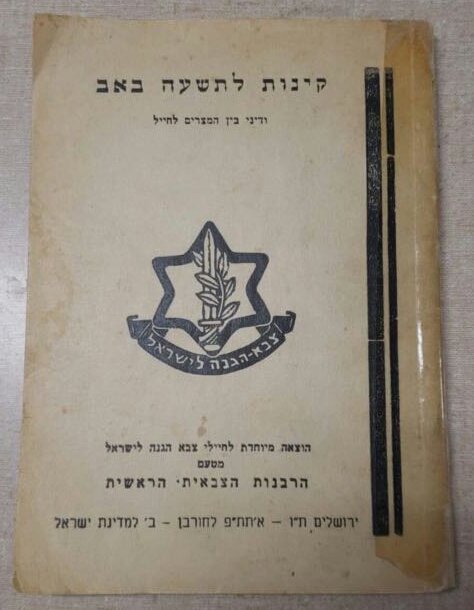Kinot are a collection of liturgical poems of lament that are said on Tisha B’Av, a dark and sad date on the Jewish calendar when we mourn the destruction of the Jerusalem Temples, and our national Jewish identity. We did another post titled “My Favorite Eicha Verses” which focuses on the Eicha Book of Lamentations by Jeremiah, but this more on the later (yet still quite old) Kinot poems that are hundreds of years old, some closer to a thousand years or more – tidbits and notes below in no particular order (collected mostly from tweets we posted on #TishaBAv #Kinot).
BORROWED, ECHOED & REIMAGINED PHRASES
Kinot poetry is incredibly rich & complex esp as it echoes, reflects, borrows and paraphrases earlier texts weaving them in w/ new & old meaning. Examples of this abound in #TishaBAv #Kinot, every line, every phrase. Here are a few examples:
 This #Kinot on book burning uses a legal #Talmud text how fire in the laws of Shabbos is “highlighted to differentiate or legally separate”… here reused to say “How this damaging fire breaks us apart”. The poet sneaks in a legal Talmudic terms in a heartfelt emotional way. This is typical of Kinot, and is best appreciated when you know the original source from which is it borrowed.
This #Kinot on book burning uses a legal #Talmud text how fire in the laws of Shabbos is “highlighted to differentiate or legally separate”… here reused to say “How this damaging fire breaks us apart”. The poet sneaks in a legal Talmudic terms in a heartfelt emotional way. This is typical of Kinot, and is best appreciated when you know the original source from which is it borrowed.
 Another example: Lamenting the torn cloak of High Priest during the desolation of the destruction recalls the biblical verse specifying about this priestly cloak’s reinforced hem, “not to tear!” This tear is not just about a garment but about what used to be a dependable protective edge, that doubled hem, that is now torn apart, with loose vulnerable ends, all strewn about…
Another example: Lamenting the torn cloak of High Priest during the desolation of the destruction recalls the biblical verse specifying about this priestly cloak’s reinforced hem, “not to tear!” This tear is not just about a garment but about what used to be a dependable protective edge, that doubled hem, that is now torn apart, with loose vulnerable ends, all strewn about…
AND BORROWING FROM KINOT
This centuries old poem in my lifetime recalls “Prisoners of Zion” the refuseniks and religious dissidents, and the underground Chassidim in Soviet Russia, and modern-day captives of the IDF, among other held against their will, striving and yearning and hoping for freedom.
 Tisha B’Av Kinot mourns the burning of (manuscript) books (burning of Talmud in Paris 1242) as people in this #Kinot by R’ Meir of Rothenburg who himself died in captivity (because he refused to be ransomed fearing it would become a tragic precedent to kidnap Jewish leaders) and his body wasn’t released for burial until 14 years later. He was a great & important Torah teacher, a teacher of teachers and Rabbi of Rabbis, living in Germany about 600 years ago.
Tisha B’Av Kinot mourns the burning of (manuscript) books (burning of Talmud in Paris 1242) as people in this #Kinot by R’ Meir of Rothenburg who himself died in captivity (because he refused to be ransomed fearing it would become a tragic precedent to kidnap Jewish leaders) and his body wasn’t released for burial until 14 years later. He was a great & important Torah teacher, a teacher of teachers and Rabbi of Rabbis, living in Germany about 600 years ago. Such mixed messages in #TishaBAv’s morning Torah reading! Yes, it opens with abandonment & destruction, dispersion & exile… but also has the opening verse chanted on Simchat Torah (one of happiest dates on the Jewish calendar) & a key verse on seeking repentance/return. This Torah reading has one of the most foundational verses in Chabad thought about connectedness to G-d. So in the midst of this distance, there’s also so much closeness!
We have more on Kinot and Tisha B’Av, perhaps to add more soon.
Meanwhile on Tisha B’Av look up these other posts:
My Favorite Eicha Lamentation Verses
What’s This Brick Doing on the Table?


